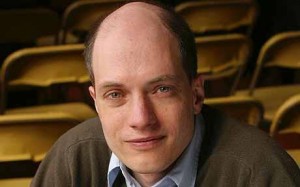 Alain de Botton’s new book, Religion for Atheists: A Non-believer’s Guide to the Uses of Religion (2012), will be available in early March. If it is anything like his TED talk on Atheism 2.o, it will be worth reviewing and discussing. In his nearly 20-minute long talk in Edinburgh, Scotland last summer he shared these words:
Alain de Botton’s new book, Religion for Atheists: A Non-believer’s Guide to the Uses of Religion (2012), will be available in early March. If it is anything like his TED talk on Atheism 2.o, it will be worth reviewing and discussing. In his nearly 20-minute long talk in Edinburgh, Scotland last summer he shared these words:
Now what is Atheism 2.0? Well it starts from a very basic premise: of course, there’s no God. Of course, there are no deities or supernatural spirits or angels, etc. Now let’s move on; that’s not the end of the story, that’s the very, very beginning. I’m interested in the kind of constituency that thinks something along these lines: that thinks, “I can’t believe in any of this stuff. I can’t believe in the doctrines. I don’t think these doctrines are right. But, “a very important but, “I love Christmas carols. I really like the art of Mantegna. I really like looking at old churches. I really like turning the pages of the Old Testament.” Whatever it may be, you know the kind of thing I’m talking about — people who are attracted to the ritualistic side, the moralistic, communal side of religion, but can’t bear the doctrine.
He then goes on to suggest several ways to “borrow” from religion including guidance and didactic learning, sermons, using repetition (including via recurring topics based on a calendar), and bringing together mind and body.
So What?
Alain de Botton’s claim that Atheism 2.0 can and should borrow heavily from the world’s great religions by taking whatever concepts work and deploying them for secular purposes is an incredibly pragmatic approach with strong appeal to a wide audience.
- Does his approach strike you as postmodern and/or as appealing primarily to a postmodern audience?
- How can congregations and denominations that are not primarily based on doctrine leverage these basic ideas for mission and ministry? Will these be the more attractive denominations in coming years? Why or why not?